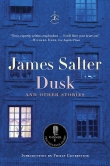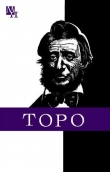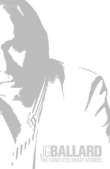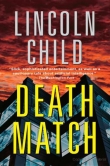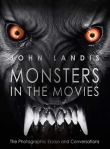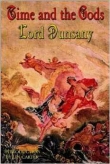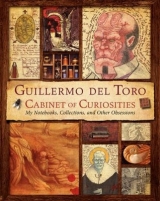
Текст книги "Cabinet of Curiosities: My Notebooks, Collections, and Other Obsessions"
Автор книги: Guillermo del Toro
Соавторы: Marc Scott Zicree
Жанры:
Публицистика
,сообщить о нарушении
Текущая страница: 4 (всего у книги 17 страниц)
Nearby, incongruently, is a figure of Jesus. “It’s a Jesus that was in my house when I was a kid,” Guillermo explains. “It’s a pretty gory Jesus. Pretty brutal, but his face is so serene. This explains a lot.”

A vinyl toy from del Toro’s childhood stands guard over mementos from his past in the Comic Book Library.

The photo is of del Toro at age nine, pretending to suck blood out of his sister, Susana.
THE COMIC BOOK LIBRARY
Though he has a library dedicated to them, Guillermo admits, “Every closet in the house has comics.” He’s read all of them, but he tends not to buy publications of recent vintage: “I only buy the new collected editions of Dick Tracy, the Spirit, or Little Lulu.”
Covering the walls are more originals by Mignola, Corben, Wayne Barlowe, Mike Kaluta, and Gahan Wilson. “The final pages of Alan Moore’s From Hell are over there,” gestures Guillermo. Then he notes, “This is one of the last drawings Charles Doyle did.” Doyle was a popular illustrator who went mad and was sent to a mental institution, where he continued to draw until his death in 1893.
Atop a drawing table rests a strange, furry creature. “It’s a toy from when I was kid,” Guillermo exults. “It’s an action figure of an insect warrior. I started collecting vinyl art long before people were into it. This is a real toy. It’s not a postmodern reflection. Somebody said, ‘This would make a great toy.’”
THE BACKYARD
The backyard shared by the two wings of Bleak House is surprisingly sunny and pleasant, and Guillermo admits he doesn’t work here. “I don’t like the outside. But I like sitting here in the shade, just enjoying the silence.”
In truth, Guillermo wishes he had gnarled trees like those his neighbors down the block have planted. A bit of Victorian topiary would lend a more somber mood to Bleak House’s yard and complement the rest of the decor.
But that’s a dream to be realized another day. For now, the backyard is a serene place where Guillermo can contemplate his next projects in the company of a life-size bronze sculpture of Ray Harryhausen, one of his creative patron saints.
One final question remains: Was this exactly the house he wanted when he was a kid?
“Yes,” Guillermo affirms, “if I ever finish….”

Julio Ruelas’s The Critics (1906), a print of which hangs in the entryway at Bleak House.
GRAPHIC INSPIRATIONS
MSZ: Your work involves such a melding of influences. Is there a specific fine artist that you might say is your favorite?
GDT: Well, the guy I connect with most viscerally is Francisco Goya because I just find him incredibly powerful.
But I love the symbolists and I love some of the surrealists. Of the symbolists, I love Marcel Schwob, Félicien Rops, Odilon Redon. I was very influenced by Rops. And I love Mexican symbolist artists. I have two original drawings at Bleak House by an artist named Julio Ruelas. He did one of my favorite engravings. I have it right in the entrance. It’s called The Critics, and it is a self-portrait where Ruelas has a parasite with a long beak and a top hat on his head.
Ruelas was really incredible. He was influenced by Arnold Böcklin, who is another favorite of mine, but he was also influenced by Félicien Rops. Ruelas is very lewd, but he’s also very sensual and sort of a necrophiliac. He is a very strange guy. One of his drawings that influenced everything I do is called Profane Pieta, and it’s a crucifixion with the virgin at the foot of the cross. It looks like a really great religious illustration. You can show it to your grandmother, and she’ll go, “Oh, what a beautiful religious painting.”
But then, if you observe carefully, Christ has an erection—the shadow of death has taken him over—and the virgin has one breast out and a snake is suckling or biting her. I learned from this painting that you can make things with one apparent surface meaning and have them work as a symbolist piece that is completely counter, depending on the way you organize the symbols. I was fascinated by that drawing. I discovered it when I was sixteen or seventeen, and it had a big impact on me.

A sketch of Odilon Redon’s feathered eye motif in one of del Toro’s early notebooks.

The Winged Man (1880), by Redon, a classic symbolist image that has inspired del Toro.
After that, I started to really get into the methodology of how to read a painting, and I started to appreciate the little symbols that medieval and Renaissance portraits would use, the symbology in Gothic cathedrals. And then I got into alchemy. My mind has always been guided by curiosity.
MSZ: With respect to the symbolists, you really can see resonances from those guys, such as Redon and Rops, in a lot of the visual elements that you explore.
GDT: Yeah, Redon and his feathered eyes. Fantastic. Proto-symbolist, actually.
MSZ: He’s an interesting bridge between the symbolists and the Pre-Raphaelites just in terms of his style.
GDT: I’m also fascinated by the lives of the Pre-Raphaelites and their ideas. They certainly are very interesting characters that start with the same spirit and, as you read about their lives, they get co-opted by the society that they set out to overturn. It’s a very interesting artistic moment.
MSZ: Why, then, do the symbolists have more power than the Pre-Raphaelites for you?

An illustration for Mephisto’s Bridge, one of del Toro’s unrealized projects, done in the style of a medieval illustration.
GDT: To me, the Pre-Raphaelites are more surface driven. More superficial. Vanity and aesthetics eventually overpower their spirituality and otherworldly power. The symbolists, on the other hand, tried to organize stuff, like medieval painters did—where they would organize every detail in a painting to tell a story. Like a portrait of a young woman—she would be holding a peach, which would represent the ephemeral nature of beauty. Because the peach rots very fast. Then, by the same token, there would be flowers. And there would be a skull. They would organize things so you would read the painting. But the symbolists take all that much further. And they start bringing in elements of subterranean eroticism, buried, unconscious desires. In some ways, they prefigure Dada and Surrealism in that they tap into concepts and ideas and spirituality but are driven by impulse!
MSZ: I see them as an arrow right into your work because your work puts beauty and sensitivity right alongside grotesquerie and death. You don’t sugarcoat stuff.
GDT: That’s what surprises me a lot when I read reviews of my work. I read one criticism on Pan’s Labyrinth in which somebody said, “Well, it’s a very simple dichotomy. Fantasy is beautiful, real life is hard.” And I thought, What movie did they watch? The fantasy in Pan’s Labyrinth, except for the ending, is super grimy. The fairies are these little imps that are dirty, naked, and kind of evil looking. The Faun is incredibly ambivalent, even menacing. I cannot think of the frog as a pleasant piece of fantasy. Or, much less so, the Pale Man. And having to feed the mandrake with blood, and the fetal implications of the mandrake? I mean, I tried to make the fantasy as gritty as reality because that’s what it’s supposed to be.
When you seek beauty only within a world of perfection, you end up with illustrations of fairies dressed in pink tutus, sprinkling dust, with cherubic babies and a flower garden. And then the images really, in my mind, don’t have any weight, any gravity. But when you have seen something horrible and you choose to create something beautiful, the work comes out with a hefty weight, and I think that’s why I like Rops, who was undoubtedly a guy who was tragic and fascinated by war, tragedy, destruction, and sex. He creates something beautiful out of that.
MSZ: The feeling with Rops is that he really indulged in a lot of vices.
GDT: Such was the life of the bohemians and the life of the symbolists. They would explore pleasure no matter what the consequences. After a certain moment in the history of art, the artist and the work become indivisible. For example, you can see the essence of Van Gogh in his paintings.

The Faun (Doug Jones) in Pan’s Labyrinth is intentionally both inviting and menacing.

Prince Nuada (Luke Goss) provides one of the best examples of del Toro’s fascination with pale, translucent skin, a feature he admires in the work of Édouard Manet and in medieval painting.
MSZ: That goes for Goya, too, at least in his later work. The interesting thing about him is his duality—he did these beautiful court images, the portraits, and then he finds his real power in all the grotesquerie.
GDT: With Goya, you really have a compulsion. He is literally chronicling the compulsions within him, the darkest phase of his life. The engravings and the “black” paintings are such a contrast to the luminous paintings, the court paintings, and all the parties in the garden. I don’t like the colors in those in the same way that I’m not attracted to Renoir because I find him too colorful. I’m attracted to pale—for example, Édouard Manet. I’m very much attracted to pale palettes or dark palettes.
MSZ: You’ve talked before about how on Blade II you were influenced by Caravaggio and chiaroscuro.
GDT: I wish, [laughs] I was trying for a very deep saturation of colors and dense blacks and I discussed Caravaggio with Gabriel Beristain, the cinematographer on Blade II, because he had shot Derek Jarman’s Caravaggio. So we talked about chiaroscuro quite a bit. He said, “A lot of people think that chiaroscuro is just about creating one source of light, and the rest is darkness. But it really is incredibly thoughtful and very, very regimented and a very calculated, painterly approach.” In the same way, nothing is casual in Vermeer. A lot of people think, Vermeer is going to he a big window with soft light streaming in and certain textures, silk, and plaster walls. But, really, all those guys codified their paintings and approached painting and light very carefully.
Too, there is a narrative quality to the art. There was a moment when art made it very clear, as we approached the modern concept of art, that there was a refutation of the narrative in art, and this function was given over to mere “illustration.” Some people I admire, like Edward Hopper, are constantly demeaned as “just a great illustrator.”
MSZ: When discussing Blade II, you’ve also referenced Andrew Wyeth’s Christina’s World. I don’t know if you know the story, but she is actually a crippled girl, and the only way she can get around is by crawling. So while a lot of people see Christina’s World as a very idyllic image, there’s actually a grotesquerie to it.
GDT: Christina’s World can never be confused with a mere illustration. What I always say is that illustration is a piece of art that doesn’t tell you a story. It needs the text to complete it. It’s incomplete art. Christina’s World, though, is a world unto itself.
I try to do the same in film. I always say that 50 percent of storytelling is “eye protein,” which is very different than eye candy. They look the same to the untrained eye, but they are fundamentally different. A master of eye protein, especially in his early films, is Ridley Scott. Half of why Blade Runner is important is not in the screenplay or the story.
MSZ: A moment ago you were talking about how the artists you tend to gravitate toward have somewhat muted palettes. But Blade Runner and your films have very bright palettes. Yours in particular are supersaturated, making them almost like comic books.

The illuminated book from Hellboy II.
GDT: It’s true. The films I’m the proudest of are the Hellboys, Pan’s, Devil’s Backbone, and Pacific Rim. I think they are absolutely beautiful to look at. I try to work with very contrasted palettes in the movies and in the design of the monsters, and sometimes it works really well.
I base a lot of my color composition on a primary clash between blue or cyan and gold or amber. This over a thick layer of blacks and then the rest of the colors come in an absolutely punctilious, obsessive manner. I am particularly careful with red. I use it only in calculated ways. Even on Hellboy.
But if you look at Devil’s Backbone, the film is saturated, but it is divided into almost monochromatic episodes. And Cronos is very controlled. Pan’s Labyrinth, too, has a really controlled palette, although it is saturated.
I’m attracted to and influenced by some things that I don’t do. For example, I was always fascinated by a translucency of the skin. Many, many artists, going back to the Middle Ages, depict a translucency of the skin. There is a fascination with pale skin in European art that, for me, is really attractive. And there’s a moment where it becomes almost iridescent. There’s a hue of green, an almost fishlike quality in certain paintings that has had a huge influence on me. But I don’t know if that’s come through in the movies. I’ve tried.
MSZ: We’ve just covered quite a lot of Western art history. Your parents had art books in your home when you were a kid, and you were able to look at the entire history of art, right? It’s very interesting. You were really studying a lot of different styles and soaking up a lot of different influences at the same time.
GDT: Yeah. And at the same time, I was reading comic books by Bernie Wrightson, Jack Kirby, and John Romita Sr.
MSZ: In contrast with some of the fine artists you gravitated toward, those guys were dealing with extremely vivid colors, extremely vivid expressions. With respect to Bernie Wrightson, was it Swamp Thing?
GDT: Yeah, I never bought many superhero comics. I used to buy House of Secrets, House of Mystery.
So I have a very strange mix of art, movies, books, and magazines. I don’t like compartmentalizing. The mind is flexible. If you are rigid and you say, “I am a scientist,” or, even worse, “I am a nuclear scientist, and that’s my only area of interest,” it’s a tragedy. Or “I’m a serious literate. I’m a serious writer. I’m a serious filmmaker. I do only drama.” Obviously, you can find an amazing range in drama, but by not being rigid you really discover things and end up enjoying yourself.
As an artist, I think that you have to be as free as a kid: In the morning you can be an astronaut; in the afternoon an Indian or a cowboy; and at nightfall an Antarctic explorer. And you play, enjoy, and grow. Inevitably as you play, you grow.
MSZ: Let’s talk, then, about how you started drawing—how you started synthesizing all these influences and finding a voice that was your own.
GDT: Well, I started drawing very young because I was illustrating my horror stories. But the three creatures I drew obsessively were the Gill-Man from Creature from the Black Lagoon, the Frankenstein monster, and Lon Chaney’s Phantom of the Opera. But obsessively—when I was eating ice cream, or on a bicycle….
I remember there was a panel by Jack Kirby, from the period when he was doing Etrigan the Demon for DC. It was a story about Farley Fairfax, who was an actor who got his face taken by a demon, and Kirby quoted from Phantom of the Opera. The original art, which I always wanted to buy, is in the hands of Mike Mignola, and he constantly tortures me with that fact. But that panel of Farley Fairfax—his mouth open, his eyes, and the tongue—and he’s saying, either in that panel or shortly thereafter, he says, “He took my face! He took my face!” Oh, I drew that panel like a Lichtenstein. I mean, I drew it small, I drew it big.
MSZ: How old were you when you started drawing?
GDT: As far back as I can remember.
MSZ: And was it always in color?
GDT: No, no. I did all the doodles, and all the little balls and sticks and all that stuff, in black and white. But color was very important because I’m very attracted to color, instinctively.
MSZ: So when you first started working with color, was it with crayons or markers?
GDT: I’ve always hated crayons because I hate the texture. What I did with crayons was eat them, like every kid. I loved the taste of crayons when I was a kid. But I always drew with colored pencils. I find them very soft. Now, if I had the time, I would do alcohol markers all the time because that’s such a gentle medium.
MSZ: And where did you get your color sense from? It’s very strong.
GDT: I think it’s expressive. The colors of youth are gold, blue, and white. Those are the colors of hope and untainted promise. Then, to me, cyan is always a very subterranean color. And death is black, revenge is red, and tarnished gold or blue for memories. But it varies from picture to picture. They all dictate their own palette.
I taught myself to mix colors because I started painting models when I was a very young kid. So I was assembling models, all these monsters.
Part of me dreams of what would have been if I had become an illustrator. There is a saying, “Those who can’t draw, render.” And I can’t draw. I really am a self-taught guy, so my drawings are very deficient, and the way you mask a deficiency in a drawing is by overrendering, so what you see in the notebooks are not very good drawings.
MSZ: You’re really skilled, though. Did you ever take classes as a kid?
GDT: Well, the ones at school. But I was always drawing the wrong things, so I never got good grades on that, because they always found the subjects objectionable. For example, they would say, “Choose a moment in the life of this president and make it in clay.” And I would do the president when he was shot in the head, with blood on the table.
When some people saw my drawings and my paintings, they told my mother, “You’ve got to take this kid to a psychologist.” And she took me to a psychologist, and the guy gave me some clay and he said, “Do whatever you want.” And I did a skeleton. And then I asked the psychologist, “What does ‘bastard’ mean?” That didn’t help my case.
But I was truly—I mean, I knew stuff when I was a kid that I just don’t know how I knew. There are proclivities in my life that I just don’t try to understand.


Drawings by del Toro from his early twenties.
GUILLERMO’S MUSINGS ON SYMBOLIST ART
I HAVE ALWAYS BEEN partial to the symbolist and Pre-Raphaelite artists, because they go against the avant-garde. To them, the past was a source of awe and mystery. But unlike the Pre-Raphaelites, the symbolists also cast their gaze inward to find the root of the stain on the human soul: lust, violence, corruption. They connect our human impulses—good and bad—with the mystical, mythical, and supernatural elements that represent them in art (for example, satyrs, skulls, centaurs, demons) and in that they are, in my opinion, truly modern and timeless.
There are a few key words to understand the symbolist movement: paganism, mysticism, Romanticism, and decadence. Not all artists in the movement share these in equal measure. Félicien Rops fits decadence perfectly, Carlos Schwabe embodies paganism quite well, Redon tended toward mysticism, and Arnold Böcklin ascribed, without a doubt, to Romanticism.
I first became aware of the symbolist movement through a Mexican artist who was not exactly a contemporary of Rops, but rather a spiritual twin: Julio Ruelas (1870–1907), a multitalented artist obsessed with two of the symbolists’ staple themes: sex and death. In the late 1970s, while walking through a flea market in Puebla, Mexico, an art book with a startling cover caught my eye: a forensically detailed oil painting of a drowned satyr being pulled out of a river. Its body was purplish and bloated and its tongue hung loosely to the side. The book was Teresa del Conde’s monograph on Ruelas, which to this day is the best, if not the only, authoritative source of Ruelas lore.
Although he is not formally considered part of the school, Ruelas is a bona fide symbolist and his work seems heavily influenced by Rops, to the point that they share some shockingly similar vignettes and tend to gravitate toward a consistent array of imagery and themes: blind faith, Circe, satyrs, Socrates.

The Supreme Vice (1883) by Félicien Rops.
FÉLICIEN ROPS (1833–1898)
I was first exposed to Rops when in Cannes promoting Cronos in 1993. A young French critic urged me to seek him out so, while staying in a crappy hotel in Paris, I bought a book or two on Rops and was blown away by his sensibility.
The similarities between Rops and Ruelas made it all click for me. The nineteenth century was a period of enormous moral contrast. Nobility, honor, and good manners, all of which were supported by the “academic” art of the age, started to be sabotaged by a wild and perverse notion: that life was full of pagan pleasures and savage impulses. Our flesh made us weaker, yes, but it also made us human.
Sex for these artists is a savage, almost demonic, task. And none of them is more accurate in portraying the hopelessness of male desire than Rops. In his paintings are abundant, detailed, and deformed genitalia that stand side by side with images of death, evil, and decay. Like his century, Rops was a prisoner of dread and desire.
It is a fact that sex and politics go hand in hand, and Rops was also blessed with a sharp satirical eye that yielded some of the best political cartoons of the time—all of them mordant portrayals of the changing social climate. Incessantly drawing, etching, and painting, Rops strived to capture a “tainted” century where the entitlements of royalty and the excuses of nobility were about to be supplanted by more mundane rights and ambitions.
Savage and sensuous as his themes may be, Rops’s line work is supremely elegant—even exquisite. His use of drypoint is testament to the precision of his draftsmanship.
ARNOLD BÖCKLIN (1827–1901)
Bocklin’s treatment of light has always fascinated me. The way he captures the soft, dying sunlight and uses it to cast deep, ominous shadows in his forests and rocky outcrops is exquisite. The jewel-like quality that his overcast skies confer to the green ocean waves is mesmerizing.

Isle of the Dead (1880) by Arnold Böcklin.
Böcklin’s superb technique makes his creatures and landscapes seem absolutely real. Hooves, roots, glazed eyes, and fur all appear to be accurate depiction of actual, living things. Look at any of his beasts and you will see that their eyes are wild and stunned by instinct, their bodies sensual but animalistic, their mouths agape and lubricated. They all have the strength and savagery that I associate with Arthur Machen, Algernon Blackwood, and—in the case of Böcklin’s sea creatures—with H. P. Lovecraft.
If Rops excelled at portraying the human form, then Böcklin is the single most gifted landscape artist of the symbolist movement and the best at creating a sense of atmosphere. Böcklin’s landscapes are characters themselves—full of dramatic gloom, trees, rocks, and seas that reek of antiquity. In his most famous painting, Isle of the Dead (1880), for example, the darkness in his woods lurks like a sentient creature and the majestic vertical rocks and cypresses form a perfect mausoleum. It’s no wonder his painting was “paraphrased” by another Swiss artist almost a century later: H. R. Giger.
To me, Böcklin is perfect proof that art does not reproduce the world; it creates a new one.
ODILON REDON (1840–1916)
Most art movements are comprised of such a variety of artists and techniques that it becomes difficult to define the borders that separate one from the next, or the qualities that fuse them into a movement in the first place. If you think of Schwabe, Böcklin, or most of the other painters associated with the symbolist movement, you’ll evoke a sense of realism. By way of contrast, Redon’s diffuse pastels and line work seem weightless and luminous—sometimes almost abstract. Both his technique and concerns remain unique amongst his peers. He is the sublime anomaly.
Even so, Redon was part of a more general movement amongst painters working at the end of the nineteenth century to turn away from technical realism and to begin to value the strength of a brushstroke, the immediacy of an emotion. But these new values were typically developed with respect to the outside world, whereas only Redon looks to the inside.
Distinctive motifs in Redon’s work are: the feather, the eye, prisons and bars, botanical shapes, feathery line work reminiscent of animal fur, and spidery forms with human faces—every one of these comes straight from the id and a sense of pagan frenzy. If one needs any persuasion to find a strong connection between the Surrealists, the Dadaists, and the symbolists, one doesn’t need to look any further than Redon. Most of his images go beyond the pagan contemplation of Böcklin or Schwabe and become iconic, striving to capture not only the essence of a symbol but its direct link to the human psyche. Jungian and Freudian images populate his work and remain elusive, slippery, and hellish, but then his color work has a nimble, vital energy that captures mystic rapture and the true light of paradise.
After I die, if there is life beyond this one and I go anywhere—either up or down—I am pretty sure that both places will be art directed by Redon.
CARLOS SCHWABE (1866–1926)
The two artists who inspired me most while working on Pan’s Labyrinth and Hellboy II: The Golden Army were Schwabe and Arthur Rackham. Their interpretations of the fairy world are not at all similar, but both men seem to approach it as explorers attempting to document a world only revealed to their eyes.
Schwabe did splendid graphic work based on texts by Zola, Mallarmé, and Baudelaire, but his drawings, etchings, and paintings should not be regarded as mere illustrations for these works. Each one of them is suffused with a mystical energy and with pantheistic conviction.
In this day and age, we confuse hip smartness that does not fully endorse any idea with intelligence, and consider callousness the product of an experienced point of view of the world. Naturally, this attitude leads us to value artists who seem to know it all. But Schwabe and the rest of the symbolists were the exact opposite: They celebrated not knowing, the twilight of our knowledge. To them, the supernatural was absolutely real, and mystery was the supreme goal of art.

According to del Toro, one of the great mysteries of cinema is its ability to reverse time, a technique he employs at the beginning of Pan’s Labyrinth, depicted here in storyboards by Raúl Monge.

